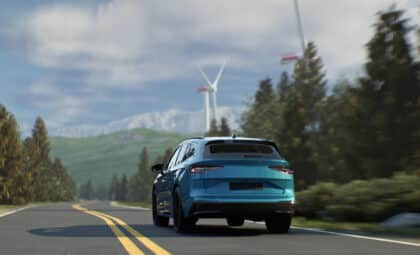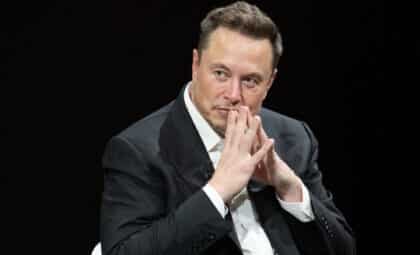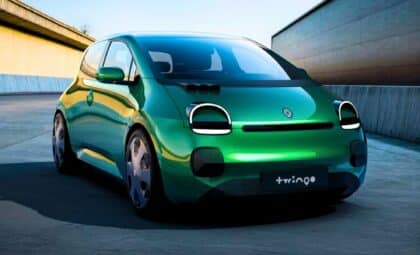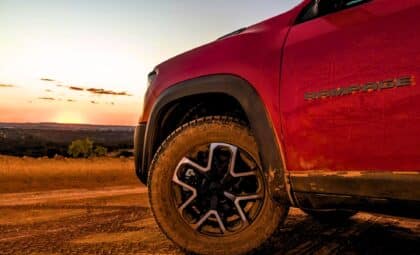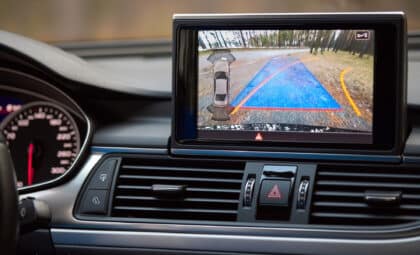Your first look at the Cadillac CT6
Cadillac kind-of-sort-of premiered its 2016 CT6 prior to its proper reveal in New York by airing an ad during the Academy Awards that urged potential customers to #daregreatly. This same campaign also involved a couple of seemingly conflicting aspects, including a strange social media “whiteout” that only lasted for a few days and an additional TV ad that was somewhat confusingly scored by a Teddy Roosevelt speech and showed not one single Cadillac in the process. While this wasn’t anything quite on the same level as that awful ad for the ELR, it still suggests that the century-old brand is still having a hard time finding its footing when it comes to selling itself to America. Early 2015 sales seem to confirm this fact.
Uwe Ellinghaus, Cadillac’s head of marketing, sat down with Marketing Daily to talk a bit about the “Dare Greatly” campaign, and he frankly didn’t do much to veer anyone away from the perception of haughty pretense that seems to follow Cadillac’s ads around.
Ellinghaus told Marketing Daily’s Karl Greenburg that the intention of the “Dare Greatly” campaign was to “create disruption, mystery, and intrigue.” Given that the commercials tend to focus on pretty much everything but Cadillac’s product, this was a goal well-achieved. He was also quick to note that Cadillac is “absolutely not” interested in making the same kinds of ads as its compeitiors–that’s to say, ads that actually show the vehicles that the company wants you to buy.
Ellinghaus attemps to get across the idea that Cadillac is not necessarily just selling cars and SUVs; it’s also selling dreams. Owning a Cadillac should be the fulfillment of a dream, and the idea is that people buy Cadillacs because they want to be a part of a larger family. As such, apparently, Cadillac is under no obligations to show off its products in commercials, giving it plenty of opportunities to focus on celebrities who fit its archetype for the greatly daring.
Ellinghaus touts in particular the success of an Oscar spot that stars Steve Wozniak–an ad that features exactly 16 seconds of Woz lying on a couch and about 9 seconds worth of CT6–saying that the 30-second spot accumulated 1 million “downloads” in about 24 hours. When confronted with the idea that this essentially does the same thing for Cadillac that Matthew McConaughey did for Lincoln (i.e. using a well-known celebrity as a sort of proxy for the brand), Ellinghaus retorted:
Yes, we are just featuring people, but people who dare greatly. We aren’t showing them driving our cars. We are talking about them, what they have achieved and how [they have done so]. Like Jason Wu said, his mother let him play with dolls, and from there he becomes a huge hit in fashion. They are just people who embody this daring spirit, and I like that we are not saying they are Cadillac customers. These are not testimonials.
Sure, this is all true, but 1) this still means that Steve Wozniak and Jason Wu are, like Greenburg suggested, being utilized as some sort of analog for the brand and 2) this somehow suggests that a testimonial method is inferior in attempting to sell a product that is quite reliable on customer testimonials. Still, Ellinghaus comes across as if, in not displaying its vehicles and not stooping to the levels of its German and American competitors, it is taking a more eloquent and more correct approach to advertising.
Meanwhile, Cadillac remains the 22nd best-selling auto brand in America behind Acura, Audi, Buick, Lexus, Mercedes, BMW, and GMC. There’s a German word for that, you know.
News Source: Marketing Daily
The News Wheel is a digital auto magazine providing readers with a fresh perspective on the latest car news. We’re located in the heart of America (Dayton, Ohio) and our goal is to deliver an entertaining and informative perspective on what’s trending in the automotive world. See more articles from The News Wheel.




